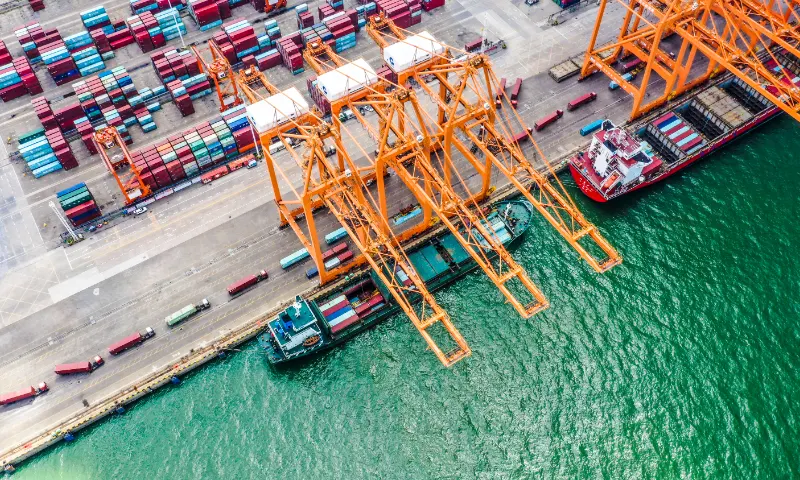The year 2023 marks the 10th anniversary of the establishment of a comprehensive strategic partnership between China and Malaysia, with next year witnessing the 50th anniversary of establishment of the diplomatic relations between the two countries. Earlier this year, Chinese President Xi Jinping and Malaysian Prime Minister Anwar Ibrahim reached a consensus on building a community of shared future for China and Malaysia, after Anwar’s successful visit to China in late March. How have China and Malaysia maintained strong cooperation momentum? What practical benefits will the “Twin Parks” and the East Coast Rail Link project under the China-proposed Belt and Road Initiative (BRI) framework deliver to local people? What are the points of convergence between China’s and Malaysia’s development concepts? How should Southeast Asian countries respond to advocacy of the “China threat” theory by external forces? GT reporters Hu Yuwei, Li Xuanmin, Hao Shuangyan and Zhao Juecheng (GT) recently interviewed Chinese Ambassador to Malaysia Ouyang Yujing (Ouyang) in Kuala Lumpur to hear his insights on the current state of bilateral relations and cooperation.
GT:How do you evaluate the current China-Malaysia relationship?
Ouyang: China and Malaysia are good neighbors with a thousand years of close ties, good friends who share a deep bond, and good partners focusing on win-win cooperation. The relationship between the two countries has always been at the forefront of China-ASEAN relations. It can be said that the China-Malaysia relationship is enduring and has broad prospects.
The first reason behind the booming relations is the clear navigation of high-level exchanges. As you know, in March of this year, President Xi Jinping and Prime Minister Anwar reached an important consensus on building a China-Malaysia community of shared future during Anwar’s visit to China. This is a milestone event in the history of bilateral relations and has opened a new chapter in China-Malaysia relations.
The second reason is strong economic and trade cooperation. Last year, the bilateral trade volume between China and Malaysia reached $203.6 billion. China has been Malaysia’s largest trading partner for 14 consecutive years. The cooperation in jointly building the BRI between China and Malaysia has steadily advanced, continuously delivering development dividends. During PM Anwar’s visit to China, 300 Malaysian entrepreneurs were part of an accompanying delegation, and the two countries signed 19 memorandums of understanding with a total value of 170 billion Malaysian ringgit ($37 billion), setting a new record.
The third is heightened people-to-people exchanges. Cooperation in culture, tourism, education, science and technology, and other fields between China and Malaysia has yielded remarkable results. Taking tourism as an example. Since 2012, China has been Malaysia’s largest source of tourists from outside ASEAN member countries, local spending generated by Chinese tourists accounting for 17.8 percent of Malaysia’s total tourism revenue. With the COVID-19 pandemic now over, Chinese tourists have been flocking to Malaysia, and the recovery of the tourism industry is expected to provide strong impetus for Malaysia’s economic growth.
GT: This year marks the 10th anniversary of the BRI. How do you evaluate cooperation between China and Malaysia under the BRI framework in the past decade? Looking ahead to the next decade, what are your expectations for high-quality BRI cooperation?
Ouyang: Malaysia is one of the earliest countries to support and participate in the BRI. With the care and support of the leaders of both countries, high-quality construction of the BRI between China and Malaysia has achieved fruitful results.
According to Malaysian data, China’s direct investment in Malaysia reached $12.5 billion in 2022, accounting for one-third of Malaysia’s foreign direct investment.
Flagship projects such as the “Two Countries, Twin Parks” and the East Coast Rail Link are progressing as planned, providing strong impetus for China-Malaysia economic and trade cooperation.
We hope both sides can upgrade cooperation in a more innovative, intelligent, digitized and sustainable way. It is believed that under the strategic guidance of the leaders of both countries, we will see more achievements and better benefits for the people of both countries.
GT: In January this year, Malaysian Prime Minister Anwar proposed a new concept called “Malaysia Madani (Civil Malaysia).” How do you view the integration between the concept of “a global community of shared future” and the concept of “Malaysia Madani”?
Ouyang: During Prime Minister Anwar’s visit to China, he stated that the vision of building “a global community of shared future” is highly aligned with the “Malaysia Madani” initiative proposed by the Malaysian government.
The alignment between the two concepts is being both high-level and specific. First, we should follow the principle of “building a community of shared future between China and Malaysia,” and promote our cooperation in various fields toward higher level of quality development. Second, we should deepen alignment of development strategies, promote deep integration of industrial chains, supply chains, data chains, and talent chains between the two countries. Third, we should continuously cultivate growth points for cooperation in areas such as electronics, digital economy, green development, new energy, high-end manufacturing, and modern agriculture, benefiting both countries and their people. Fourth, we should further promote people-to-people connectivity, strengthen cultural exchanges, and enhance mutual understanding between the people of the two countries, especially for younger generation.
GT: Malaysia Prime Minister Anwar inaugurated the first station for the East Coast Rail Link (ECRL) project in May. How do you evaluate the significance of the ECRL project for the local economic development, transportation connectivity, and people’s well-being in Malaysia?
Ouyang: The ECRL project is the largest economic and trade cooperation project between China and Malaysia, as well as the largest single construction project undertaken by Chinese companies overseas. The ECRL spans a total length of 665 kilometers, crossing the Malay Peninsula and connecting the north and south of Malaysia.
I have visited the construction site of the ECRL project in Malaysia on several occasions. From a macro perspective, the ECRL project fully embodies the friendly and mutually beneficial cooperation between China and Malaysia. Specifically, the ECRL plays an important role in promoting local economic development, accelerating infrastructure connectivity, and improving people’s well-being.—GT










